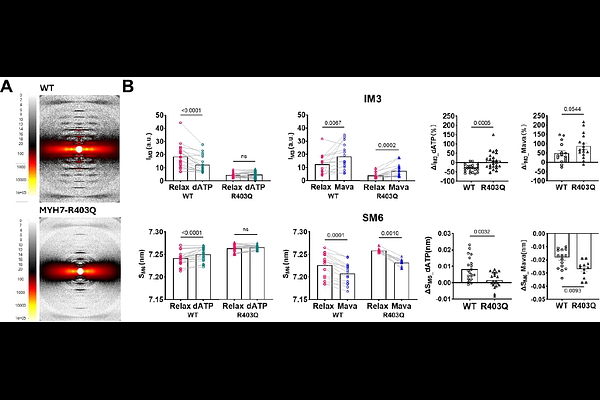Probing relaxed myosin states in hypertrophic cardiomyopathy by second harmonic-generation microscopy

Probing relaxed myosin states in hypertrophic cardiomyopathy by second harmonic-generation microscopy
Arecchi, G.; Dente, M.; Ma, W.; Scellini, B.; Piroddi, N.; Scardigli, M.; Yu, J.; Zhao, J.; Cicchi, R.; Kinegawa, R.; Muellenbroich, C.; Poggesi, C.; Ferrantini, C.; Irving, T.; Regnier, M.; Sacconi, L.; Tesi, C.
AbstractThis study explores the use of polarized second-harmonic generation (pSHG) to investigate myosin conformation in the relaxed state, differentiating between the actin-available, disordered (ON) state and the energy-conserving, ordered (OFF) state. By pharmacologically shifting the ON/OFF equilibrium using a myosin activator (2-deoxyATP) or inhibitor (Mavacamten), we demonstrate the sensitivity of pSHG in quantifying the ON/OFF ratio in skeletal and cardiac tissues. Comparisons with X-ray diffraction measurements further validate our findings. Applying this approach to a sarcomeric mutation associated with hypertrophic cardiomyopathy, we show that R403Q/MYH7-mutated minipigs exhibit a higher ON fraction compared to controls. This difference is abolished under high concentrations of myosin modulators, indicating saturation toward either state. ATPase assays reveal increased resting ATPase activity in R403Q samples, persisting even when the ON state is saturated, suggesting that elevated energy consumption in the R403Q mutation is driven by both an ON shift and enhanced myosin ATPase activity.